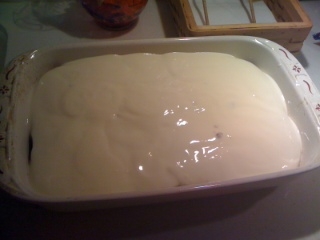Homemade Meat Sauce
Ingredients:
1.5 lbs ground beef (or turkey)
1 lb hot Italian sausage
20 oz sliced mushrooms
1 green bell pepper, chopped
1 yellow onion, chopped
1 red bell pepper, chopped
1.5 tbsp olive oil
1 28-oz can tomato puree
1 12-oz can tomato paste
24 oz tomato sauce
BIG splash red wine (whatever “big splash” means to you: anywhere from 1/2 cup to 2 cups will do fine. Heh heh)
6 oz freshly grated Romano cheese
1 tbsp dried oregano
1 tbsp dried basil
1 bay leaf
1-2 tbsp sugar
garlic salt + pepper as needed
spaghetti noodles + additional grated cheese for serving
(I also had a giant tomato from a farmers market, sliced that up and threw it in too)
look at all the pretty colors!
Heat the olive oil in a large pot over medium heat. Once hot, add the onion, bell peppers and sliced mushrooms. Saute for about six – eight minutes, until mushrooms are soft. Remove veggies from pan and set aside.
Add ground beef and sausage meat. Cook until meat browns, stirring frequently with a large rubber spatula. Drain fat, and then set meat aside.
Add tomato paste to the pot, and cook for a few mins alone, then add tomato puree, tomato sauce, veggies and meat back. Stir well. Then, add the bay leaf, wine, spices, sugar and cheese. Stir well and bring sauce to a simmer.
Simmer sauce for an hour and a half over low heat, stirring occasionally. Taste it as you cook, adding more wine, spices or garlic salt to suite your taste buds. The longer the sauce cooks, the better it will taste! This actually simmered in my house for about 5-6 hours, stirring every so often and tasting...
Serve sauce over hot spaghetti noodles with extra cheese. Sauce can be refrigerated for up to five days or frozen for up to three months. Sauce will taste better the next day, after flavors have time to meld.
Time:
2 hours (or more)
Deeeelichious!!

















